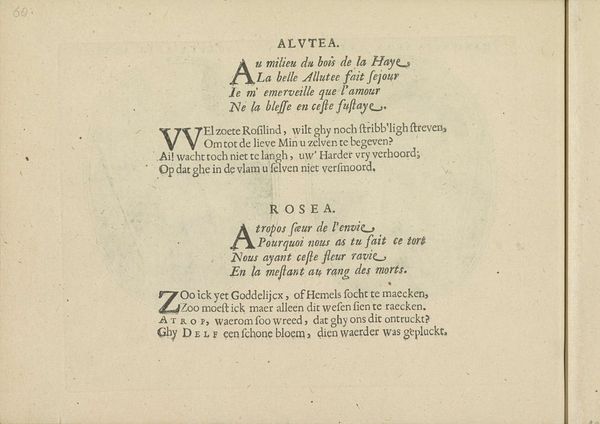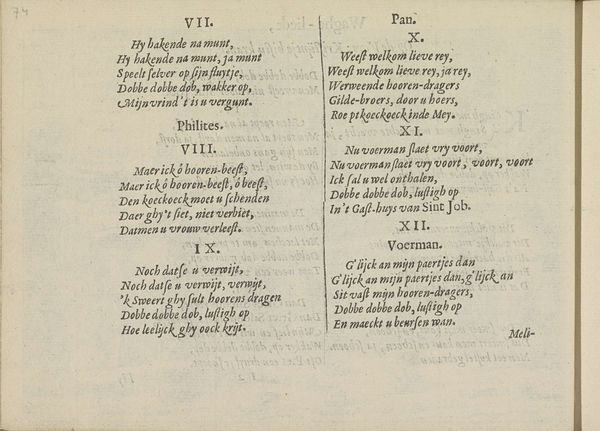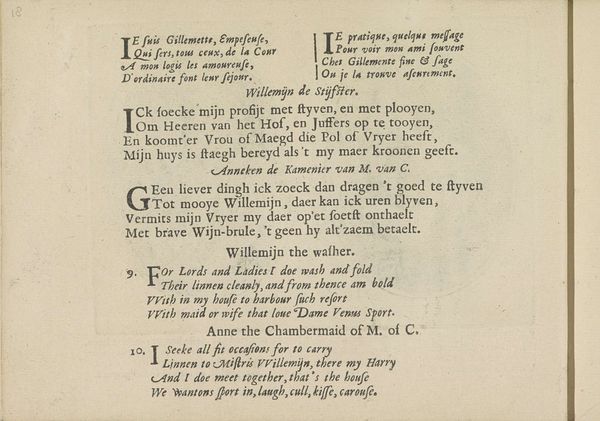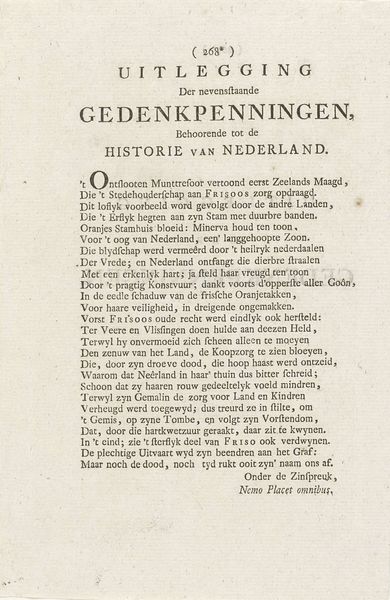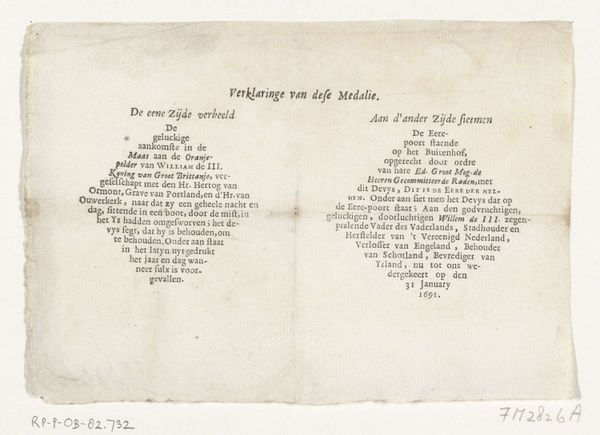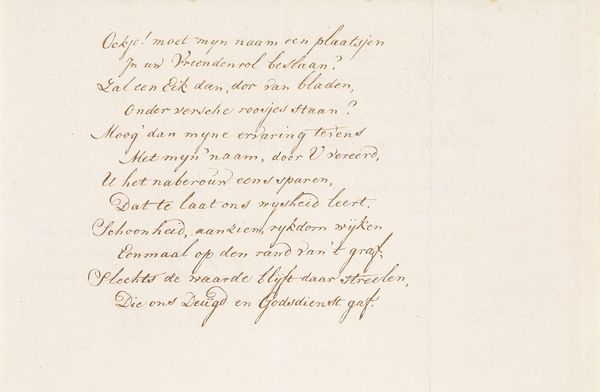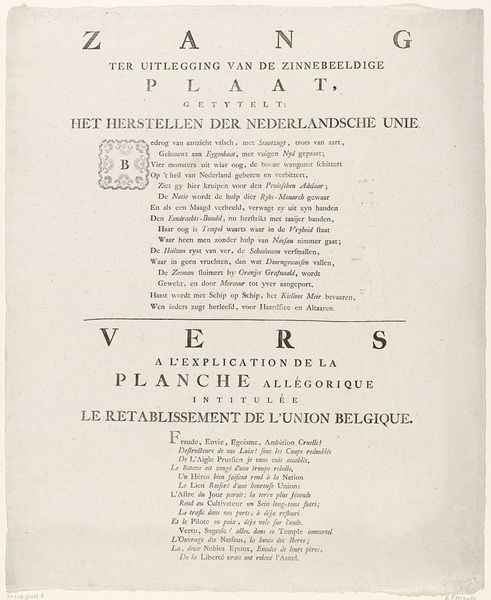
Titelpagina voor: C. Udemans, Af-beeldinge van de verkeerde werelt, 1660. 1660
0:00
0:00
graphic-art, print, engraving
#
graphic-art
#
dutch-golden-age
# print
#
text
#
engraving
Dimensions: height 190 mm, width 142 mm
Copyright: Rijks Museum: Open Domain
Curator: Here we have the title page to C. Udemans’ "Af-beeldinge van de verkeerde werelt" from 1660, a Dutch engraving. It's a dense piece, primarily text-based. What’s your immediate response to it? Editor: Stark. Severely printed. It feels like reading a decree nailed to the town square. The lines of text form a visual grid, and there's a certain rawness to the material itself. Not beautiful, but immediate and purposeful. Curator: It presents, in verse, an explanation of the book's frontispiece – a commentary on a "world turned upside down," reflecting the turbulent times. The word "Hoy," repeated, signifies earthly ambition. It is such a perfect symbol of the "fool’s errand," of vanity. Editor: The composition supports that message. The title shouts out to us from the page’s center in very prominent bold font. A ladder of couplets drops below, each one neatly stacked. There is even an unsettling directness achieved with simple means, don’t you think? Curator: Yes. These verses, the rhythm, almost act as a mnemonic, designed to be easily remembered and spread. There's a stark warning about seeking "Hoy"—earthly gain. What fascinates me is the psychology; the fear and societal anxiety are palpable in the recurring imagery of death and the chaotic chariot, that ‘wage-man’ pulling us towards earthly obsessions. Editor: And that emphasis underscores the fragility and even the absurdity of ambition. The stark contrasts within its structure mirrors that sense of disillusionment, and its unembellished materiality almost adds to its veracity, to its truth. The text itself almost becomes the symbol in a metatextual sense. Curator: Precisely. The title page itself mirrors the moral within the book’s contents: how worldly ambition—what it signifies—can feel heavy as words. And while its aesthetic might lack decorative appeal, that makes its symbolic message regarding ambition that much more profound. Editor: Absolutely, this print demonstrates that form can become a highly functional and forceful aesthetic when used appropriately. Something plain and bold to hold on to and which you might consider for years to come.
Comments
No comments
Be the first to comment and join the conversation on the ultimate creative platform.


